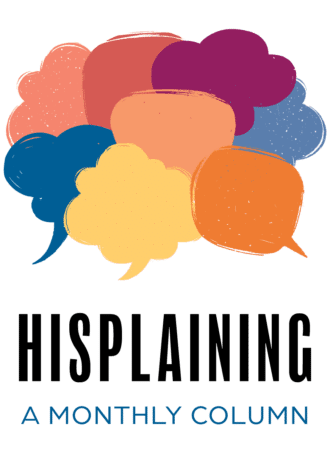
|
Getting your Trinity Audio player ready...
|
I have spent the last few weeks reflecting on the recent Supreme Court Decision on Affirmative Action, reading opinion articles from various news sources, and reviewing organizations’ responses and official statements. I’ve also discussed the topic with my stepdaughters, two of which are currently in college. And yet, I am struggling to express my own thoughts on the implications of the ruling without first reflecting on my and my siblings’ journeys navigating higher education as Latinos.
Sibling Success
In 1992, when I was eight years old, my oldest brother received his admissions letter to Harvard University (plus acceptance letters from every university he applied to). That letter changed the trajectory of his life and that of my siblings. He was the first child and the first grandchild on both sides of the family to attend a university.
Our story is one of “firsts” and “only” from childhood through adulthood—the story of an immigrant family that came to the United States with nothing in hopes of achieving the “American Dream.” When people see us, they do not know that Spanish was our first language, my mother only finished middle school, and my father only finished first grade. They see a doctor, teacher, financial planner, and philanthropic advisor affiliated to three ivy leagues and several private universities.
“My siblings and I were just as deserving as other students of acceptance and attendance at our respective universities.”
Aracely Muñoz
Our Fort Worth, Texas-zip code would surprise many. Most of the families that lived in our “barrio” were either first or second generation and mostly Hispanic or Latino. The local high school’s latest statistics reveal that nearly 93 percent of students are Hispanic or Latino, nearly 40 percent have a limited English proficiency, nearly 92 percent are economically disadvantaged, and, most difficult to learn, 82 percent of students are at risk of dropping out.
As a result, when my brother was in eighth grade, he interviewed for and was accepted into a magnet high school about fourteen miles away. The school bus would pick him up around 6:00 a.m. every day to take him and other local “gifted” students to another part of town. Soon enough he was invited to a special program called Mathematics and Science for Minority Students (MS2) that made a big difference in his trajectory. Two of my siblings would also participate in the rigorous summer program at Phillips Academy in Andover, Massachusetts, throughout their high school summers. The rest of my siblings, including me, soon followed their high school and post-secondary examples.
What’s Next?
My husband and I use a baseball field analogy when telling my stepdaughters about my zip code and the disparities we witnessed growing up. We explain that my stepdaughters are on the “baseball field”—maybe on second base or in the outfield, but they are on the field. My siblings and I weren’t even in the parking lot.
Do I think we would have been successful and accepted into elite universities whether or not affirmative action had been in place in the 1990s? Yes, I do. My siblings and I were just as deserving as other students of acceptance and attendance at our respective universities. And the high school we attended, as well as the summer programs available there, helped ensure we had the chance to prove our ability to succeed and attain a higher education.
“My fear now is that there will be fewer stories like ours.”
Aracely Muñoz
My fear now is that there will be fewer stories like ours. That there will be even more unfair barriers to surpass. We will be relying on the support of independent programs like MS2, the Hispanic Heritage Foundation’s LOFT Source Program, and Hispanic Scholarship Fund’s programs, and business owners, employers, philanthropists, and other leaders who, I hope, will continue to search for talented students in our community.
And yet, our existing programs are not enough. There continues to be a need for more programs like these to connect young bright students who have the potential to succeed and may lack the resources or connections to attain them. It is up to us, including readers of Hispanic Executive, to continue to create a path for this generation and those that follow.
If your employer does not currently offer a high school or college internship program, consider talking to your HR team about starting one. If you run your own company or firm, consider working with your staff to create a pilot program that can be built out over time. And if internships and apprenticeships are not possible, consider donating as individuals and as an organization to places like Hispanic Scholarship Fund and others doing this great work. The task at hand will be harder, but not impossible.
As the director for corporate partnerships at Children’s Health, Aracely Muñoz leads a team focused on collaborating and engaging with companies that choose to partner with Children’s Health as their cause of choice in the greater Dallas and Collin County community. Her team raises several million dollars annually to help provide critical care and resources to patients and families treated at the hospital.
Muñoz is a board member at the Texas Women’s Foundation, a member of DFW H100, a part of the H100 Latina Giving Circle, and a board member for Educational Opportunities, an organization dedicated to providing scholarships and mentorship opportunities underserved youth that graduate from Dallas Independent School District high schools. In 2018, Muñoz won the La Cima Latina Leader award from the Greater Dallas Hispanic Chamber of Commerce in the nonprofit category. More recently, she was included in the Association of Healthcare Philanthropy’s 2021 class of 40 Under 40 leaders and in the Dallas Business Journal’s 2022 class.
Muñoz has an MBA from the University of Massachusetts Amherst, a master’s degree in global leadership from Dallas Baptist University, and a BA in Latin American studies from Brown University.








